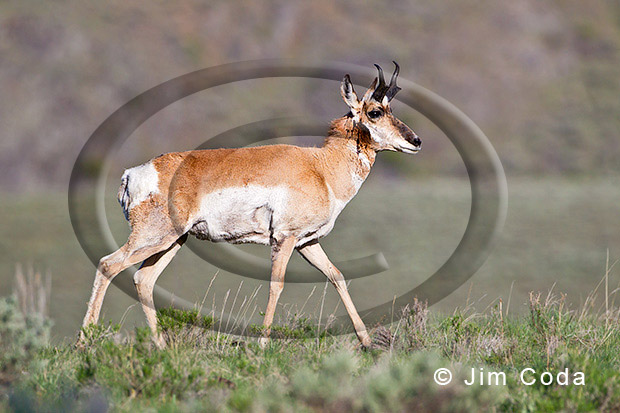Mountain Goat, Yellowstone National Park

I haven’t been blogging much in the past year. There have been two reasons. The first reason was the constant theft of my images. The second reason was that I was growing a bit tired of feeling pressured to post something on a regular basis. So, I let things slide. I did go back and put a big copyright symbol on the photos that I had previously posted, but that didn’t leave me feeling all that satisfied about the theft problem because the big copyright symbol made the photos look pretty bad. I’ve changed that to what you see here. Maybe I’ll be more happy with this copyright style as time goes by. I say “as time goes by” because I’m feeling a little more enthused about getting back to blogging.
One reason I’m enthused is that I just spent a month in Yellowstone. Spring is my favorite time there because of all the baby animals. I think this was the most successful spring trip I’ve had there. One of the high points was seeing mountain goats in an area where I had never seen them before, and, more important, at distances that made photographing them feasible. The area I’m speaking of is the Golden Gate. It’s called the Golden Gate because of the color of the rocks. If you aren’t familiar with where the Golden Gate is, it’s the canyon area you drive through just before you reach Swan Lake Flat (when driving from Mammoth).
I saw and photographed a nice looking (full winter coat) nanny and her kid on two different days and then this billy at a later time. Telling mountain goat males from females is not all that easy. The horns are a way to identify male from females, but with goats it’s not real easy because there’s not a big difference in size between the horns of a billy and a nanny. The horns of billy goats are much thicker at the base and more curved than are the horns of nannies and, in frontal views, the horns look like they are spaced very close together with the males.

The males also have a shoulder hump. Based on the thickness of the horns at the base, the curve of the horns and the shoulder hump, I think this is a billy. He is also in the early stages of molting. He will soon have a much shorter summer coat. One of the things I like about mountain goats is that they often assume stances as though they’ve been posed by the photographer.
The Park Service says mountain goats are not native to Yellowstone, but the result of the introduction of mountain goats by the State of Montana in the 1940s and 1950s which became established in the northern portions of the park in the 1990s. The Park Service also says they may be having a negative effect on bighorn sheep. The Park Service is doing research now with other agencies on mountain goat ecology and to determine the effect of the goats on bighorn sheep.





